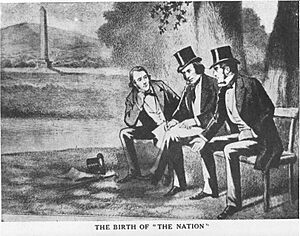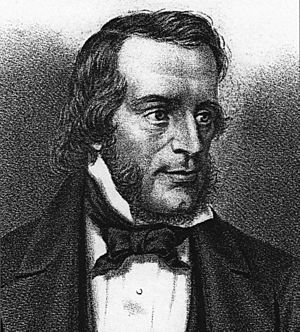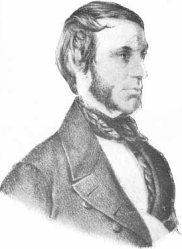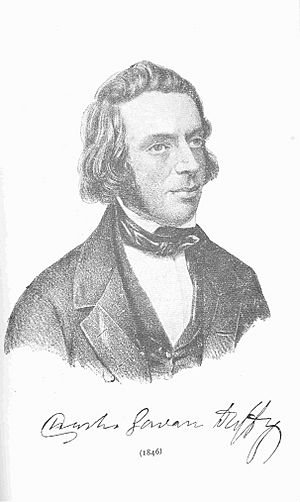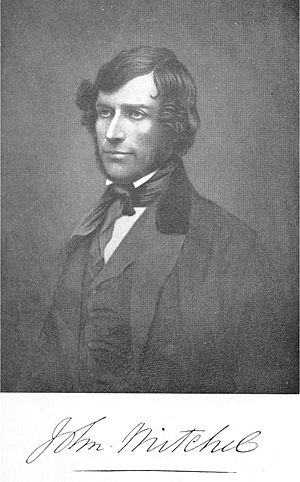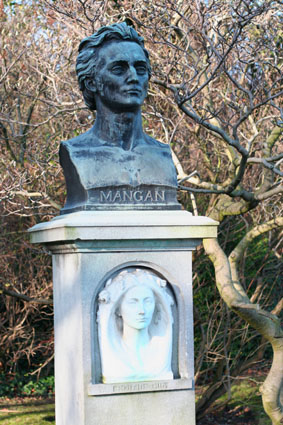The Nation (Irish newspaper) facts for kids
 |
|
| Type | Weekly newspaper |
|---|---|
| Founded | 15 October 1842 |
| Political alignment | Irish nationalism |
| Language | English |
| Headquarters | Dublin |
The Nation was an important Irish nationalist weekly newspaper. It was published in the 1800s. The first issue came out on October 15, 1842, in Dublin, Ireland. The newspaper aimed to unite people in Ireland and help them achieve independence from Britain. It continued to be published until 1900.
Contents
Starting The Nation
Three young men started The Nation newspaper. They were Charles Gavan Duffy, Thomas Davis, and John Blake Dillon. Two were Catholic and one was Protestant. They wanted to bring all people in Ireland together, no matter their religion or background. They believed this unity was important for the country's future.
These founders were part of Daniel O'Connell's Repeal Association. This group wanted to end the 1800 Act of Union. This Act had joined Ireland and Britain, meaning Ireland was ruled by the British Parliament. The Repeal Association later became known as Young Ireland.
Charles Gavan Duffy first suggested the name The National. But Thomas Davis thought The Nation was a better fit. He said it showed their goal: "We desired to make Ireland a nation." The first newspaper was published on Saturday, October 15, 1842. Many important writers contributed to the paper from the very beginning.
What The Nation Wanted to Achieve
The newspaper's main goal was to help Ireland become a strong, independent nation. They wanted to improve the lives of Irish people and give them their own government. The founders believed a "new mind" was growing in Ireland. This new way of thinking wanted to fix old problems and win new victories for the country.
The Nation wanted to lead this new movement. It aimed to unite people and direct their focus towards building a strong Irish identity. The newspaper promised to be fair and independent. It would not be tied to old arguments or political groups. It wanted to praise good ideas and criticize bad ones, no matter who they came from.
The newspaper's vision for Ireland was broad. It wanted a nation that would lift people out of poverty. It also wanted to inspire a deep love for the country. This idea of nationality would include everyone: Protestants, Catholics, and Dissenters. It would embrace people from all backgrounds living in Ireland. The goal was to create a united Ireland, recognized by the world.
The Nation supported Daniel O'Connell's efforts to repeal the Act of Union. However, the newspaper's founders also believed that Ireland might need to fight for its freedom in the end. They often wrote articles that encouraged a strong spirit among the people.
Key Writers and Challenges
John Mitchel joined The Nation in 1845. He wrote many articles, including important ones about the Great Famine. This terrible famine caused widespread hunger and death in Ireland. Mitchel's articles drew a lot of attention to the crisis.
Mitchel later left The Nation in 1847. He felt the newspaper's leaders were not taking a strong enough stand against the British government. He believed the government's actions during the famine were designed to weaken Ireland. Mitchel wanted people to resist the government more actively. He thought they should stop food from being shipped out of Ireland and even block roads. Because his ideas were more extreme than those of The Nation's owner, Charles Gavan Duffy, Mitchel started his own newspaper called The United Irishman.
Many talented women also wrote for The Nation. They often used pen names. Some famous women writers included:
- Mary (Ellen Mary Patrick Dowling)
- Speranza (Jane Elgee, Lady Wilde, who was Oscar Wilde's mother)
- Eva (Mary Eva Kelly)
These three were sometimes called the "Three Graces" of The Nation. Other women writers included Eithne, Finola, Ruby, and Thomasine. In July 1848, Jane Wilde and Margaret Callan even took over editing the paper. This happened when Charles Gavan Duffy was in prison.
The Legacy of The Nation
The newspaper became known as a voice for Irish change. This was partly because some of its key figures were involved in the Young Irelander Rebellion of 1848. This rebellion was an attempt to gain Irish independence. John Blake Dillon, one of the founders, was a central figure in the revolt. He had to flee Ireland to avoid being punished. He went to France and then to the United States.
The three founders of The Nation had different futures:
- Thomas Davis died young, at age 30, in 1845.
- Both John Blake Dillon and Charles Gavan Duffy became Members of Parliament (MPs) in the British Parliament.
- Duffy later moved to Australia. He became the leader of the state of Victoria and was honored with a knighthood.
- Dillon died in 1866. His son, John Dillon, became a leader of the Irish Parliamentary Party. His grandson, James Dillon, also became a political leader in Ireland.
The Nation newspaper continued to be published until 1900. At that time, it joined with another newspaper called the Irish Weekly Independent. Later political figures like TD Sullivan and JJ Clancy were also involved with the paper.
Important Writers
Many talented writers contributed to The Nation newspaper. Here are some of them:
- Denis Florence MacCarthy
- C. P. Meehan
- William Carleton
- John Keegan Casey
- John Mitchel
- John Kenyon
- Michael Doheny
- Thomas D'Arcy McGee
- Richard Robert Madden
- John Kells Ingram (who wrote "The Memory of the Dead")
- Edward Walsh
- James Fintan Lalor
- Thomas Devin Reilly
- John Edward Pigot
- Charles Kickham
- Jane Wilde
- Richard D'Alton Williams
- Thomas MacNevin
- John Cashel Hoey (who was an editor from 1849 to 1857)
- Michael Hogan (also known as "The Bard of Thomond")
- Hugh Heinrick


